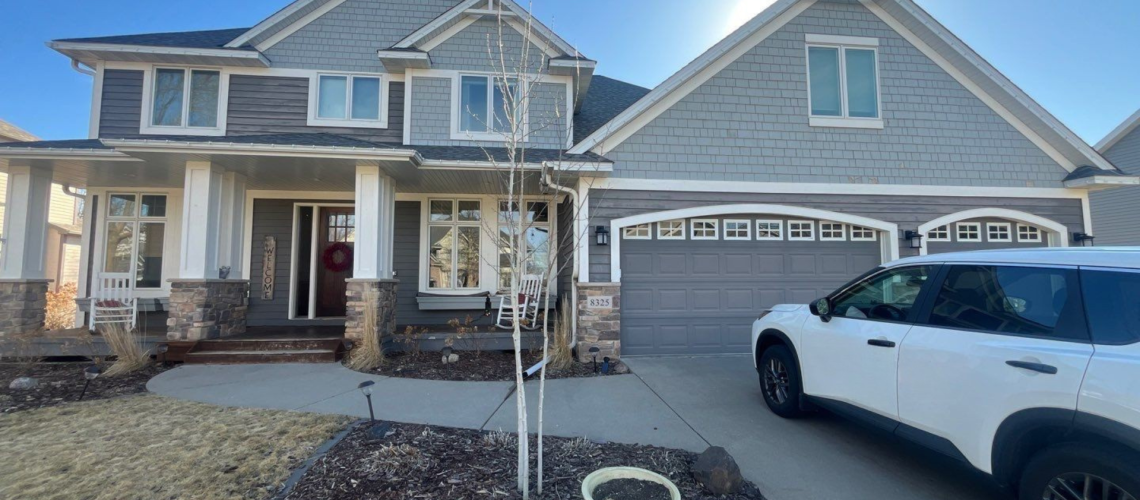Have you ever considered how a single layer of paint can enhance the energy efficiency of your home or office? With the latest advancements in heat-reflective paints and coatings, selecting the right exterior color can do more than just beautify your property—it can actively reduce heat absorption, reflect sunlight, and lower cooling expenses.
These energy-efficient paints and roof coatings are meticulously formulated to reflect a significant portion of solar radiation. This helps maintain cooler indoor temperatures, reducing the reliance on air conditioning. This innovative approach not only boosts energy efficiency but also leads to long-term savings on energy bills, enhances indoor comfort, and mitigates the urban heat island effect. Whether you aim to improve your roof’s thermal emittance or apply a fresh, energy-efficient exterior paint, reflective paints offer an eco-friendly and cost-effective solution to decrease energy consumption and greenhouse gas emissions for both residential and commercial buildings.
Why Energy Efficiency Matters for Minnesota Homes and Offices
Seasonal Energy Costs in the Twin Cities
Living in Minnesota, particularly in the Twin Cities area, involves significant seasonal fluctuations in energy usage. Harsh winters demand increased heating, while warm summers require more air conditioning. With energy rates projected to rise by approximately 9.6% in 2025, it’s essential for homeowners and business owners to find effective ways to reduce energy costs.
On average, residents in Minnesota spend around $189 per month on electricity, covering both heating and cooling needs. By lowering energy consumption during peak seasons, you can achieve substantial savings on your utility bills.
The Role Paint Can Play in Reducing Energy Waste
One effective yet often overlooked strategy to minimize seasonal energy waste is the use of heat-reflective paints and reflective roof coatings. Selecting exterior paints with high solar reflectance and thermal emittance allows buildings to reflect more sunlight and absorb less heat, significantly decreasing cooling loads during the warmer months.
This reduces dependence on air conditioning systems, leading to lower energy consumption and reduced cooling costs. In addition to painting roofs with white or lighter colors known for their superior sunlight reflection, energy-efficient paint technologies further enhance the thermal performance of building materials. This is particularly valuable in Minnesota, where maintaining indoor air quality and comfort throughout the year is essential.
Incorporating these energy-saving paints into your property’s exterior can improve energy efficiency, lower greenhouse gas emissions, and provide long-term savings on energy bills.
Choosing the Right Paint for Energy Efficiency
Light Colors vs. Dark Colors
When selecting paint colors to boost the energy efficiency of your home or office, the impact of light versus dark colors is important. Light colors—such as white, beige, or light gray—reflect a larger portion of sunlight, helping to keep buildings cooler by reducing heat absorption. This natural cooling effect can significantly decrease the need for air conditioning, thereby lowering energy consumption and cooling costs during the warmer months.
Conversely, dark colors tend to absorb more heat, raising indoor temperatures and increasing the demand for cooling. While darker paints may offer some benefits in colder climates by retaining heat during winter, lighter hues generally provide superior solar reflectance and thermal emittance, making them a better choice for energy savings, especially on roofs and exterior walls.
Specialty Paints and Coatings
Beyond choosing between light and dark colors, specialty heat-reflective paints and reflective roof coatings offer advanced solutions for enhancing energy efficiency. These coatings are designed with materials that increase solar reflectance and thermal emittance, reflecting more sunlight than standard paints regardless of their color.
For instance, reflective roof coatings can drastically reduce a building’s surface temperature, minimizing heat transfer indoors and easing the load on cooling systems. These energy-efficient paint technologies not only improve thermal performance but also provide long-term savings by lowering energy bills and reducing greenhouse gas emissions. When combined with other energy-saving materials and practices, specialty reflective paints are integral to creating sustainable, energy-efficient homes and offices.
Paint as Part of a Holistic Efficiency Plan
When Combined With Other Upgrades
Using energy-efficient paint is just one aspect of enhancing your home’s or office’s overall energy performance. When paired with other upgrades such as improved insulation, energy-efficient windows, and modern HVAC systems, reflective paints and coatings can amplify your energy savings. For example, climate-responsive paints, like thermochromic coatings, adjust their color based on temperature—helping buildings remain cooler in summer and warmer in winter, further reducing energy waste by up to 30%.
Integrating these paints with other energy-saving strategies creates a synergistic effect, making your building more energy-efficient and reducing greenhouse gas emissions, all while supporting healthier indoor air quality and long-term savings on energy bills.
Professional Application Makes a Difference
To fully capitalize on the benefits of heat-reflective and specialty energy-efficient paints, professional application is essential. Proper surface preparation, expert coating techniques, and the use of high-quality materials ensure that reflective roof coatings and exterior paints perform as intended.
Improper application can diminish the solar reflectance and thermal emittance properties of these coatings, limiting their ability to reduce heat absorption and cooling costs. Hiring qualified professionals also ensures you select the right products tailored to your building’s materials and local climate. With skilled application, you not only enhance energy efficiency but also extend the lifespan of exterior surfaces, further boosting long-term savings and sustainability for your home or office.
Conclusion
Enhance the beauty and energy efficiency of your home or business with JMJ Painters. Whether you’re refreshing your interior, protecting your exterior, or upgrading commercial spaces, JMJ Painters combines premium materials with expert craftsmanship grounded in integrity and community values.
Serving Chanhassen and the greater Twin Cities metro area, our certified professionals ensure clean, organized job sites and transparent project management for a stress-free experience. From personalized color consultations to weather-resistant coatings, every project is backed by a 5-year warranty and a faith-driven commitment to excellence.
Schedule your free estimate today and experience energy savings and results that truly last.
FAQ
Is paint energy-efficient?
Paint can indeed be energy-efficient, especially when using specialized types like heat-reflective or insulating paints. These paints reflect sunlight, reducing heat absorption and cooling costs during summer, and help retain warmth in winter, lowering energy use year-round.
Light colors and reflective pigments enhance efficiency by minimizing HVAC demand and improving building comfort.
How can home improvements increase energy efficiency?
Home improvements boost energy efficiency by sealing air leaks, adding insulation, and upgrading windows and doors to reduce heat loss and drafts. Installing programmable thermostats and efficient heating, cooling, and water heating systems also save energy. These measures lower utility bills and enhance home comfort.
Does paint help insulate a house?
Insulating paint can reduce heat transfer and reflect heat, aiding temperature regulation by reflecting infrared light with ceramic microspheres. However, it cannot replace traditional bulk insulation and is most effective as a complementary layer on roofs and walls exposed to direct sunlight.
Its impact varies but may reduce heating and cooling energy use by up to 36% under ideal conditions.
What is the most energy-efficient color to paint a house?
The most energy-efficient color to paint a house in hot, sunny climates is white or other light colors like pastels and light neutrals because they reflect sunlight, minimizing heat absorption and keeping the house cooler. In cooler climates, darker shades, especially dark grays, absorb heat to keep the home warm, making them energy-efficient in those regions.

